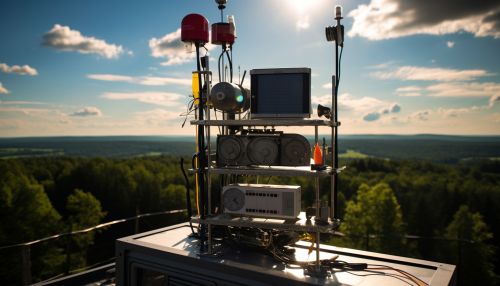Climate Change and Data Analysis
Introduction
Climate change and data analysis are two interconnected fields that have gained significant relevance in recent years. The study of climate change involves the examination of long-term weather patterns, atmospheric conditions, and changes in the Earth's climate system. Data analysis, on the other hand, is a process of inspecting, cleaning, transforming, and modeling data to discover useful information, draw conclusions, and support decision-making. The intersection of these two fields has led to the development of sophisticated models and tools to predict future climate scenarios and assess their potential impacts.
Climate Change
Climate change refers to significant changes in global temperatures and weather patterns over time. While climate change is a natural phenomenon, scientific evidence shows that human activities have greatly accelerated the rate of change, primarily through the release of greenhouse gases into the atmosphere. The primary source of these emissions is the burning of fossil fuels, such as coal, oil, and gas, for energy and transportation.
Data Analysis
Data analysis is a broad field that encompasses many techniques and methodologies. It involves the systematic application of statistical and logical techniques to describe, summarize, and compare data. In the context of climate change, data analysis is used to process large volumes of climate data, identify trends, and make predictions about future climate conditions.
Climate Data
Climate data is a broad term that refers to any data related to the Earth's climate. This can include temperature records, precipitation levels, wind speeds, and much more. These data sets are collected from a variety of sources, including weather stations, satellites, and climate models. They are then analyzed to identify trends and patterns, which can provide insights into the Earth's changing climate.


Data Analysis Techniques in Climate Science
There are many techniques used in the analysis of climate data. These include statistical methods, machine learning algorithms, and computer simulations. These techniques are used to process and analyze large volumes of data, identify patterns and trends, and make predictions about future climate conditions.
Statistical Methods
Statistical methods are widely used in climate science to analyze data and identify trends. These methods can include simple techniques, such as calculating averages and variances, to more complex methods, such as regression analysis and time series analysis.
Machine Learning
Machine learning is a branch of artificial intelligence that involves the development of algorithms that can learn from and make predictions based on data. In the context of climate science, machine learning algorithms can be used to analyze large volumes of climate data and make predictions about future climate conditions.
Computer Simulations
Computer simulations are a powerful tool in climate science. They allow scientists to create virtual models of the Earth's climate system and simulate different climate scenarios. These simulations can provide valuable insights into the potential impacts of climate change.
Impacts of Climate Change
The impacts of climate change are wide-ranging and potentially catastrophic. They include rising global temperatures, melting ice caps, rising sea levels, and increased frequency and intensity of extreme weather events. These changes can have serious implications for human societies, including impacts on agriculture, water resources, and human health.
Conclusion
The intersection of climate change and data analysis is a rapidly evolving field. The use of sophisticated data analysis techniques and tools has greatly enhanced our understanding of climate change and its potential impacts. However, there is still much work to be done. Continued research and innovation in this field will be critical in our efforts to understand and mitigate the impacts of climate change.
